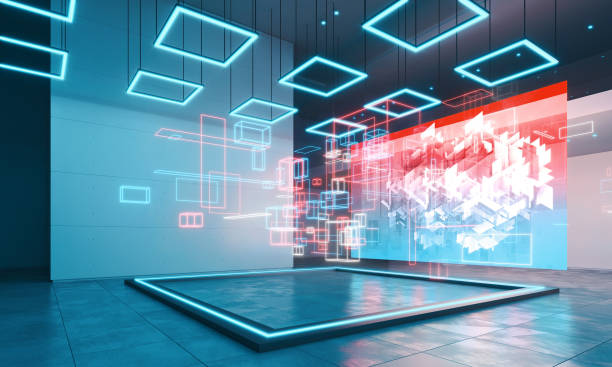Holographic Computing: The Next Frontier in User Interfaces
Imagine a world where digital information floats in mid-air, seamlessly blending with our physical reality. This isn't science fiction—it's the promise of holographic computing, a technology poised to revolutionize how we interact with digital content. As traditional screens give way to three-dimensional projections, we stand on the brink of a paradigm shift in user interfaces that could reshape our relationship with technology.

At its core, holographic computing relies on the principles of light diffraction and interference to create the illusion of three-dimensional objects floating in space. Unlike traditional 3D displays that require special glasses, holographic systems project light patterns that can be viewed from multiple angles without additional eyewear.
Current State of the Technology
While fully immersive holographic environments are still in development, several companies are making significant strides in this field. Microsoft’s HoloLens, for instance, uses a form of augmented reality to overlay digital content onto the real world, offering a glimpse into the potential of holographic interfaces.
Other players like Magic Leap and Looking Glass Factory are pushing the boundaries with their own takes on holographic and light field displays. These systems are finding applications in fields ranging from medical imaging to industrial design, showcasing the versatility of holographic technology.
The Hardware Driving Holographic Innovations
The hardware powering holographic computing is a marvel of engineering. Key components include high-resolution spatial light modulators, which shape light waves to form holographic images, and powerful GPUs capable of rendering complex 3D scenes in real-time.
Advancements in nanophotonics and metamaterials are also crucial, allowing for more efficient manipulation of light at microscopic scales. These innovations are essential for creating sharper, brighter holograms with wider viewing angles.
Software Challenges and Solutions
Creating convincing holographic experiences isn’t just about hardware—it requires sophisticated software as well. Developers are tackling challenges like real-time 3D rendering, spatial mapping, and gesture recognition to make holographic interfaces intuitive and responsive.
Machine learning algorithms play a significant role, helping systems understand and interpret user intentions in three-dimensional space. This is crucial for creating natural interactions with holographic objects, allowing users to manipulate virtual content as if it were physically present.
Potential Applications and Market Impact
The potential applications for holographic computing are vast and varied. In healthcare, doctors could examine 3D models of patients’ organs floating before them. Architects and engineers could collaborate on holographic building models, making adjustments in real-time. Education could be transformed with interactive holographic lessons that bring abstract concepts to life.
The entertainment industry is also poised for disruption, with holographic gaming and immersive storytelling experiences on the horizon. As for the market impact, analysts project the global holographic display market to reach $11.65 billion by 2028, growing at a CAGR of 29.1% from 2021 to 2028.
Ethical Considerations and Privacy Concerns
As with any emerging technology, holographic computing raises important ethical questions. The ability to project realistic 3D images into shared spaces could blur the line between reality and digital fabrication, potentially leading to new forms of misinformation or privacy violations.
There are also concerns about the psychological effects of prolonged exposure to holographic environments and the potential for addiction to increasingly immersive digital experiences. As the technology progresses, it will be crucial to address these issues through thoughtful regulation and ethical guidelines.
The Road Ahead for Holographic Interfaces
While holographic computing has made significant strides, there are still hurdles to overcome. Improving image quality, expanding the field of view, and reducing the size and cost of holographic systems are ongoing challenges that researchers and engineers are actively addressing.
Despite these obstacles, the future of holographic computing looks bright. As the technology matures, we can expect to see it integrate more seamlessly into our daily lives, transforming everything from how we work and learn to how we communicate and entertain ourselves.
The journey towards fully realized holographic computing is just beginning, but it promises to usher in a new era of human-computer interaction. As we stand on the cusp of this technological revolution, one thing is clear: the way we perceive and interact with digital information is about to change dramatically, opening up new possibilities limited only by our imagination.





